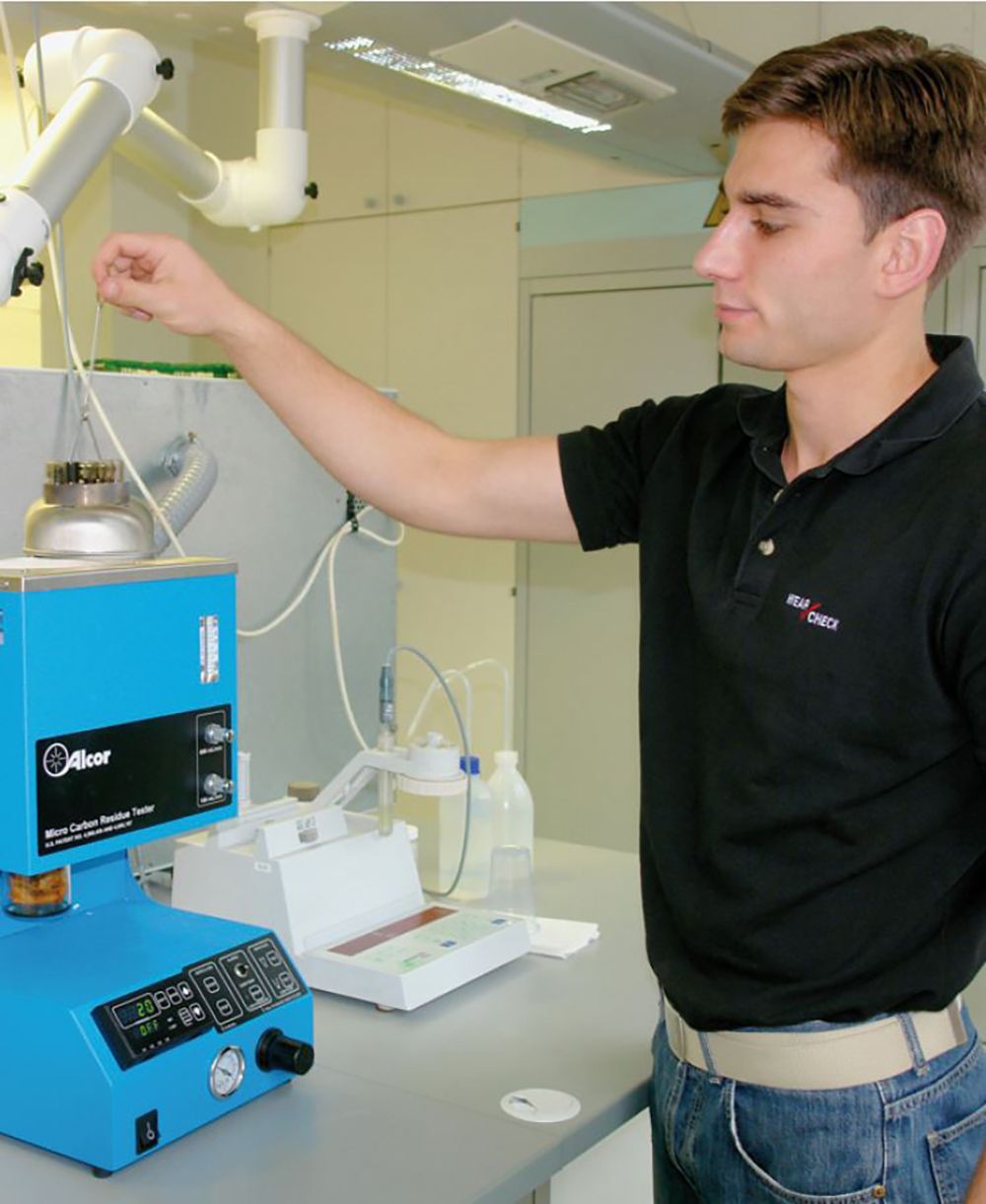Coke residue - criterion for heat transfer oils
Year of publication: 2006
In all industrial processes in which large quantities of heat are generated and transported, special mineral oil-based or synthetic heat transfer oils or thermal oils are used in addition to hot water and superheated steam.
These have the advantage of being used without pressure. At temperatures around and above 350°C, however, thermal oils become thermally unstable. At temperatures of 250 to 300°C, coke-like deposits can form in the piping, especially in the heat exchanger area. If such residues are present, the oils age more quickly and become "acidic" in the process. At the same time, they become easier to ignite because the viscosity and flash point drop due to the cracking products formed. Information on whether an oil tends to form harmful deposits is provided by the determination of the coking tendency according to Conradson in accordance with DIN 51551, often abbreviated as CCR (Conradson Carbon Residue).
Up to now, the test was carried out with standardized equipment that had been unchanged for about 50 years and whose operation required time and intuition. Since more and more operators of heat transfer systems are having the tests, which are usually also required by the TÜV, carried out off-site at low cost, OELCHECK has recently been using a semi-automatic device according to ASTM D 4530, which is only available in the USA, as a "Micro-Conradson". Its values can be transferred 1:1 to its "big old brother".
For the test, approx. 5 grams of the oil sample are first heated to 100°C under inert gas (nitrogen). This expels the volatile compounds already present in the used oil without igniting the sample. After a 10 min waiting period, the sample, still under inert gas, is heated to 500°C for 30 minutes. At this temperature, which is above the cracking temperature for petroleum-based products, all long-chain carbon-hydrogen compounds decompose into gases or low-boiling compounds.
These products formed by cracking are removed with the nitrogen stream. Only the coke-like pyrolysis products remain in the sample bottle, which also cause deposits in practice and accelerate oil aging.
The amount of deposits, which is calculated from the difference between the weight of oil weighed in and the amount of coke remaining after coking in mass or wt. %, gives an indication of the tendency to coke formation.
A coke value that is above plant volume-dependent limits is marked with the red "!" (i.e. "Caution") by OELCHECK's diagnostic engineers. Depending on the other standard values such as viscosity, flash point, IR aging, degradation of oxidation inhibitors or impurities (ICP), an oil change is then usually advised. Oil maintenance measures are no remedy for poor Conradson values, because the risk of heat exchangers and valves being completely blocked by coke deposits or of hot oil causing spontaneous combustion in the event of a leak should not be underestimated when the warning values are exceeded. Therefore, OELCHECK recommends monitoring the coke value at an early stage with the routine check. The coke residue is part of the analysis set 5 for heat transfer oils.




